With the rise in the price of gold over the past year, precious metals exploration has picked up steam worldwide. Below we feature eight companies across the exploration, development and production spectrum that maintain a focus on discovery.
Compass Gold
Compass Gold (TSXV: CVB; US-OTC: COGDF) is focused on the Farabakoura gold discovery in southern Mali. The company wholly owns the 850-sq.-km Sikasso project consisting of nine permits within the Birimian gold belt.
Farabakoura is a 15 km long target area that traverses the company’s Faraba-Coura, Ouassada and Sankarani permits.
In September, Compass released results of drilling completed at the Ouassada permit, along a 200-metre high-grade section of the Farabrakoura trend, known as the Creek zone. Reported intercepts include 6 metres of 65.6 grams gold per tonne starting at 20 metres and 13 metres of 9.25 grams gold starting at 21.1 metres.
The Creek zone is estimated to extend for 750 metres. Most of the drilling to date has been completed on the southern part of the Farabakoura target area.
Gold mineralization at Farabakoura has been traced over a strike of over 830 metres with additional parallel mineralized trends identified. Compass has outlined three potential resource target areas at Farabrakoura.
In August, the company identified three gold zones, up to 1 km long, over a 4.8 km distance at the Faraba-Coura permit, north of the Ouassada permit. Follow-up drilling is planned with a total of over 20 drill targets identified over the 15 km Farabrakoura trend.
A total of over 40 targets have been identified across the company’s holdings in Mali.
Compass plans to drill test additional targets at Farabrakoura and drill on other priority areas. Work is expected to start in January 2020.
In November, Compass announced a private placement with proceeds of about $5.5 million, with SEMAFO (TSX: SMF) subscribing for $2 million. SEMAFO is expected to own roughly 10% of the outstanding shares of Compass upon completion. Proceeds are expected to fund the exploration efforts in Mali through to the end of 2020.
Compass Gold has a market capitalization of $16.3 million.
Continental Gold
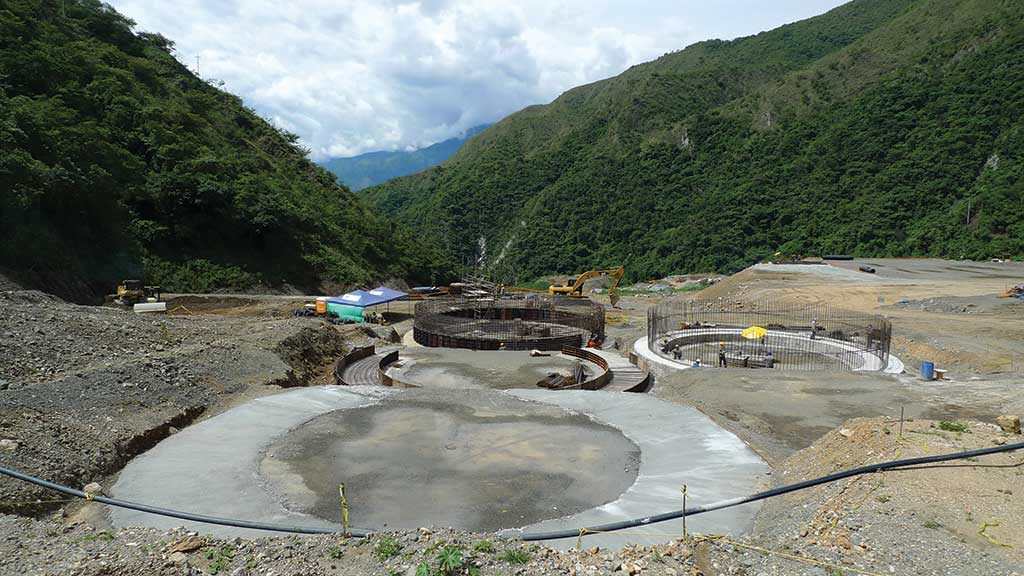
Continental Gold (TSX: CNL) is building its high-grade Buritica gold mine in Colombia. The Buritica project covers 754 sq. km and is 65 km from the city of Medellin.
Mill facilities are expected to be mechanically complete in the first quarter of 2020. Ramp-up to commercial production is expected six to nine months later. The company has started pre-commissioning in a number of areas.
A 2016 feasibility study for the project outlines an underground operation with multiple ramp access starting at a 2,100 tonnes per day throughput and ramping up to 3,000 tonnes per day by the third year. Two high-grade zones were scheduled for initial mining.
Continental expects all-in sustaining costs (AISCs) at Buritica of about $600 per ounce. The company anticipates producing up to 300,000 oz. per year at the mine, with an updated mine plan for the first three years expected before commercial production starts.
Mineralization at Buritica is most extensive within the Yaragua and Veta Sur areas, with each system traced over about 1,300 metres of strike and over 1,800 vertical metres.
Resources at the project stand at 16.02 million tonnes in the measured and indicated categories at a grade of 10.32 grams gold and 40.8 grams silver for a total of 5.32 million oz. gold and 21 million oz. silver, with additional inferred resources of 21.87 million tonnes grading 8.56 grams gold and 37.3 grams silver for a total of 6.02 million oz. gold and 26.2 million oz. silver. Proven and probable reserves total 3.71 million oz. gold and 10.7 million oz. silver.
Buritica remains open for expansion on strike and at depth. In November, Continental announced that it has been granted an exploration license for the Electra South and Orion targets, within 5 km of the Buritica mine. At Electra South, high-grade veins have been traced over an area of 2,000 metres by 500 metres, whereas at Orion, high-grade mineralization has been identified over an area of 1,500 metres by 500 metres.
Between May 2017 and July 2019, Newmont-Goldcorp (TSX: NGT; NYSE: NEM) invested a total of US$109 million in Continental; it currently holds 19.9% of the company.Continental Gold has a $855-million market capitalization.
Endeavour Mining
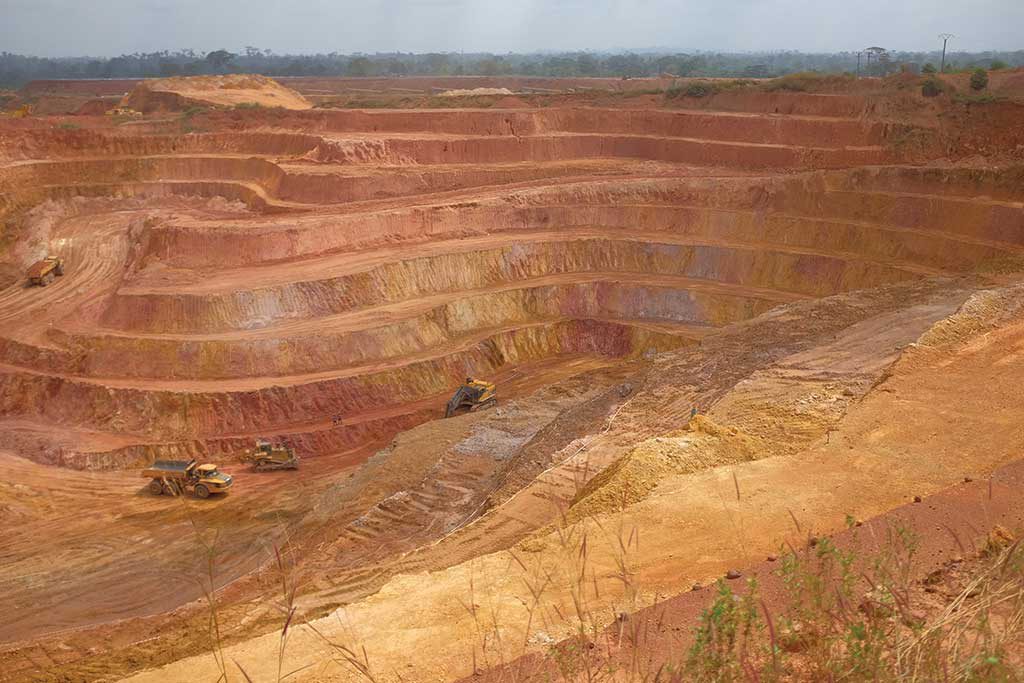
Endeavour Mining (TSX: EDV) is a West African focused gold producer with operations in Mali, Burkina Faso and Côte d’Ivoire. The company expects to produce 650,000 oz. to 695,000 oz. gold in 2019 at AISCs of US$795 to US$845 per ounce.
The Houndé mine in Burkina Faso was commissioned in 2017 and production guidance for 2019 is 230,000 oz. to 250,000 ounces. In November, Endeavour announced a 1 million oz. increase in indicated resources at Houndé.
At the Ity mine in Côte d’Ivoire, more than 1.2 million oz. gold has been produced over the past 20 years through heap leaching. Earlier this year, Endeavour built a carbon-in-leach plant at the site. In 2019, the operation is expected to produce 160,000 oz. to 200,000 oz. gold. The company expects to start a plant expansion to 5 million tonnes per year (from 4 million tonnes per year) at Ity in the fourth quarter of 2019. A resource and reserve release for Ity is also expected in the first quarter of 2020.
The company expects an additional 120,000 oz. to 130,000 oz. this year from its Agbaou project in Côte d’Ivoire, and 105,000 oz. to 115,000 oz. from its Karma mine in Burkina Faso.
Beyond its operations, Endeavour has a pipeline of development and exploration projects. The company has 10,090 sq. km of exploration holdings in West Africa that are host to over 200 exploration targets. Between 2016 and 2018, Endeavour added 4.2 million oz. to its resource inventory with over half of the mineralization hosted in oxide material.
Looking ahead, a feasibility study on its Kalana project in Mali is expected by year-end. La Mancha, a private investment company, currently holds 30% of Endeavour’s common shares outstanding.
Endeavour Mining has a $2.65-billion market capitalization.
Great Bear Resources
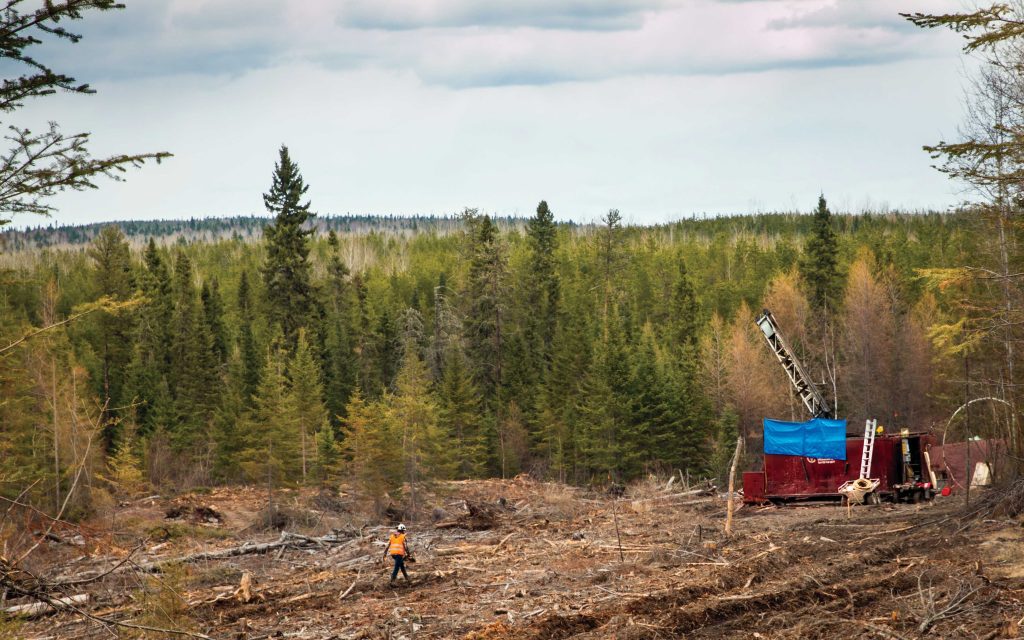
Great Bear Resources (TSXV: GBR) wholly owns the Dixie project in Ontario’s Red Lake district. The company has traced a high-grade gold system over a 23 km stretch of the project, with eight gold zones identified in the last two years.
Seven of these discoveries are located within a 4 km stretch of the LP fault, an 18.5 km target at Dixie. An additional zone was recently intercepted across the parallel North fault. Additional drilling is planned for this target with mineralized quartz vein intercepts similar to those encountered at the Hinge zone along the LP fault.
The Yauro discovery was announced in October. Two holes drilled 125 metres apart returned intercepts of 37 metres of 5.14 grams gold and 66 metres of 2.01 grams gold starting within the first 56 metres and 86 metres downhole, respectively. According to the company, coarse visible gold was intercepted at Yauro.
Intercepts from drilling completed on the Bear-Rimini-Yuma area this year include 149 metres of 0.95 gram gold and 56 metres of 1.26 grams gold.
In November, Great Bear closed a flow through bought deal private placement for gross proceeds of $16.7 million.
The company plans to conduct additional drilling to step out the LP fault to the east. It is currently working on completing the last 18,000 metres of a 90,000-metre drill program, with three rigs currently active at Dixie.
Great Bear has a $269.5-million market capitalization.
Integra Resources

Integra Resources’ (TSXV: ITR, OTCQX: IRRZF) focus is on its DeLamar project in southwestern Idaho, 160 km from Boise.
In September, the company announced the results of a preliminary economic assessment (PEA) on the project, which outlined an open pit with average annual gold production of 124,000 oz. gold at AISCs of US$619 per oz. net of by-product credits. Initial capital was estimated at US$161 million. The study outlines a project starting as a 27,000 tonne per day heap leach operation, with the addition of a 2,000 tonne per day mill in the third year of operations.
In November, Integra announced a $6.6 million placement with Coeur Mining (NYSE: CDE) alongside a $22 million bought deal.
Integra’s president and CEO George Salamis was most recently the executive chairman of Integra Gold, which sold to Eldorado Gold (TSX: ELD, NYSE: EGO) for $590 million in July 2017.
Resources at the project stand at 172.4 million tonnes measured and indicated grading 0.43 gram gold and 21 grams silver for a total of 2.38 million oz. gold and 116.5 million oz. silver, with an additional 28.3 million inferred tonnes grading 0.38 gram gold and 13.5 grams silver for 343,000 oz. gold and 12.2 million oz. silver.
The company is drilling areas outside of current resources at the DeLamar and Florida Mountain deposits.
The historic DeLamar mine was previously owned by Kinross Gold (TSX: K, NYSE: KGC), which closed the site in 1998. The site produced a total of 1.6 million oz. gold and 100 million oz. silver between 1863 and 1998.
Integra plans to start work on a pre-feasibility study in the next few months with expected completion in the second half of 2021. Permitting work has commenced.
Integra Resources has a $88.9-million market capitalization.
Pan American Silver
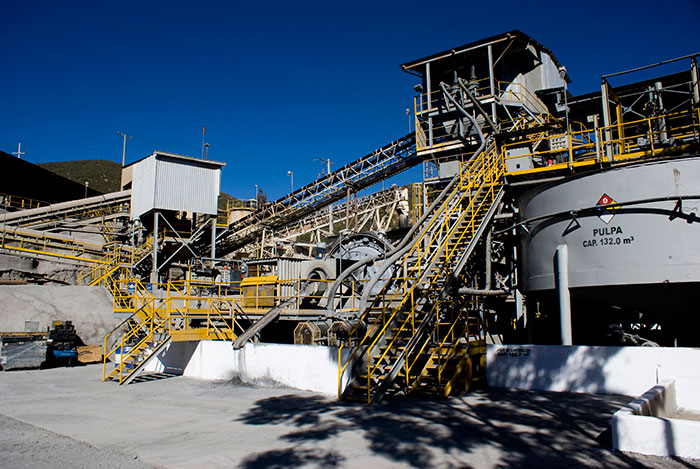
Pan American Silver (TSX: PAAS; NASDAQ: PAAS) is a silver miner with assets in the Americas. The company expects to produce 25.3 million oz. to 26.3 million oz. silver in 2019 at AISCs of US$6.00 to US$7.50 per oz. net of by product credits with gold production expected at 550,000 oz. to 600,000 ounces.
In October, Pan American announced exploration results from the La Colorada Skarn, adjacent to and below the vein system at its La Colorada mine in Mexico. Drill intercepts include 379 metres of 54 grams silver per tonne, 0.5% copper, 1.96% lead and 3.73% zinc, as well as 253 metres of 67 grams silver, 0.19% copper, 3.84% lead and 6.56% zinc. An initial resource estimate is expected by the end of the year.
In November 2018, Pan American announced a US$1.07 billion acquisition of Tahoe Resources, adding the Escobal silver mine in Guatemala to its portfolio, as well as the La Arena and Shahuindo gold mines in Peru and the Bell Creek mine in Ontario.
At Escobal, operations are suspended pending completion of a consultation process, court approval and community engagement efforts. Project reserves are at 264 million oz. of silver; commercial production started in 2014 but was suspended in July 2017.
Pan American holds approximately 26% of Maverix Metals (TSX: MMX; NYSE: MMX), a precious metals royalty and streaming company in addition to a 16.9% interest in New Pacific Metals (TSXV: NUAG).
The company also holds a free carried 25% interest in Nexa Resources’ (TSX: NEXA; NYSE: NEXA) Shalipayco zinc project in Peru and has a joint venture agreement with Radius Gold (TSXV: RDU; US-OTC: RDUFF ) on the Amalia gold-silver project in Mexico.
Pan American has a $5.11-billion market capitalization.
Probe Metals
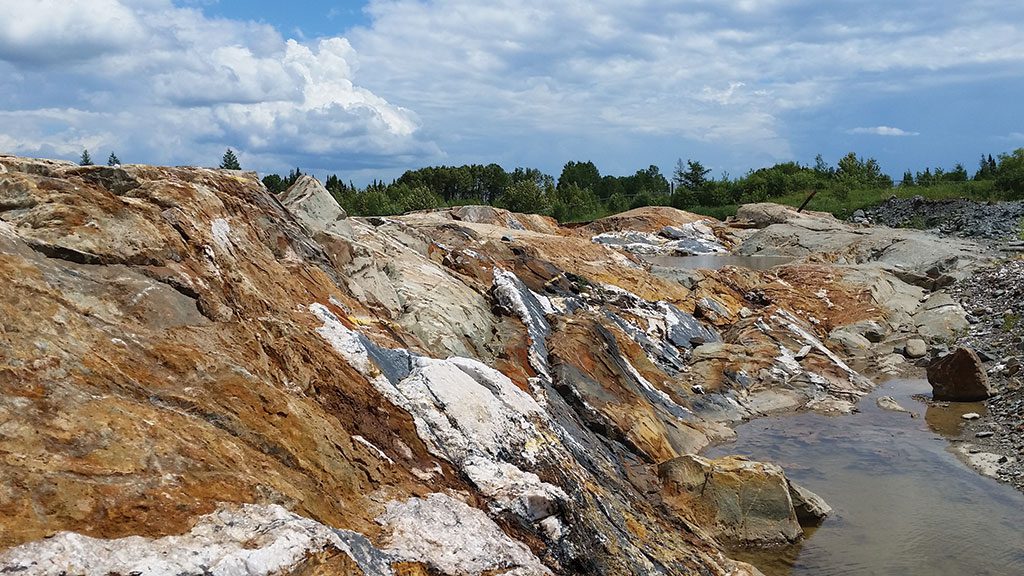
Probe Metals (TSXV: PRB) is focused on exploration in the Val-d’Or East district in Quebec. The company wholly owns the 119 sq. km Val-d’Or East project, host to four past-producing mines. The company has identified two parallel gold-bearing trends at the property, with resources distributed among deposits along the trends. New Beliveau is the largest defined deposit.
The company envisions a number of satellite open pits eventually feeding a central mill at the property.
Resources, based on an update released in September, stand at 14.6 million tonnes in the measured and indicated categories grading 1.85 grams gold for a total of 866,300 oz., and additional inferred resources of 28.7 million tonnes at 1.87 grams gold for 1.73 million oz. gold. Within these resources, a total of approximately 1.78 million oz. is pit constrained.
Probe has a 45,000-metre drill program underway aimed at growing the resource inventory and identifying new deposits. Geophysical surveys are also ongoing to locate additional trends.
In addition, Probe holds a 60% interest in the nearby Cadillac Break East property (40% Alexandria Minerals acquired by O3 Mining [TSXV: OIII] in August 2019) and a 46.3% interest in the Dubuisson holding (53.7% Agnico-Eagle Mines [TSX: AEM; NYSE: AEM]).
In January 2017, Probe signed an option agreement with Richmont Mines (now Monarch Gold [TSX: MQR]) to acquire a 60% interest in the Monique property adjoining the Val-d’Or East project.
The Sleepy deposit at Cadillac Break East is host to an inferred resource of 167,900 oz. gold with an additional 396,800 oz. inferred at Monique, based on a 100% Probe ownership.
Probe is completing baseline environmental and engineering studies on the Val-d’Or East project, with additional mining and metallurgical studies upcoming as the company looks to find the optimal development scenario.
Probe’s CEO, David Palmer, was the President and CEO of Probe Mines, which grew the Borden gold project in Ontario and was acquired in January 2015 by Goldcorp for $526 million.
In November, Probe announced a $17 million bought deal private placement.
Newmont-Goldcorp (TSX: NGT; NYSE: NEM) holds 14% of Probe shares outstanding.
Probe Metals has a $116-million market capitalization.
Teranga Gold
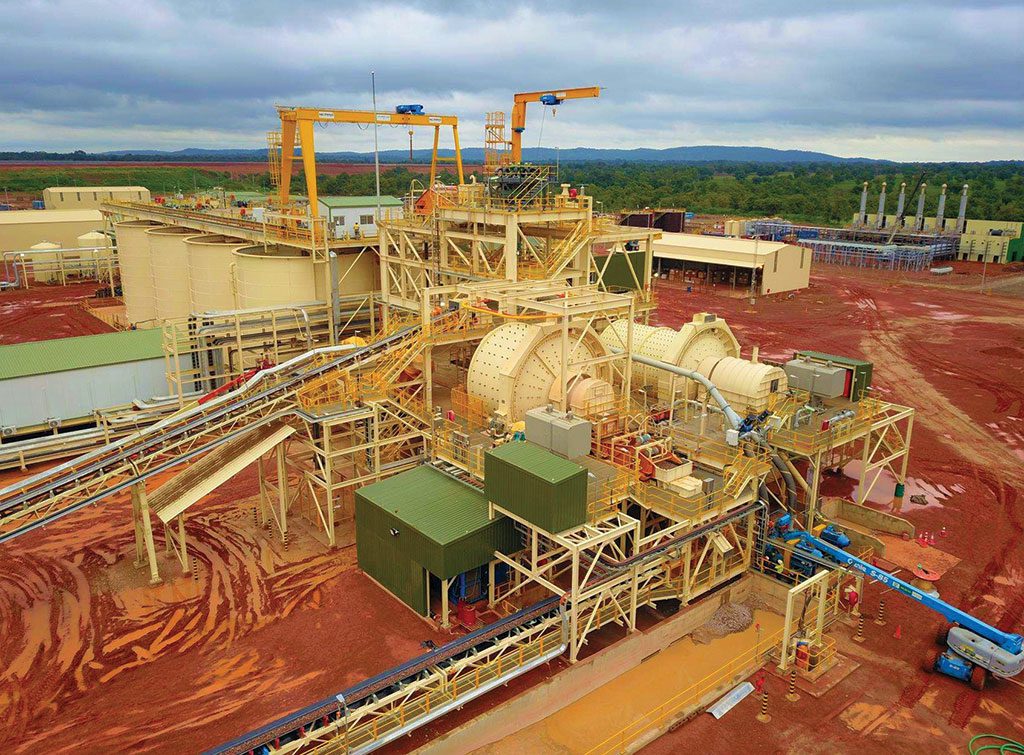
Teranga Gold’s (TSX: TGZ) primary producing asset is the Sabodala gold mine in Senegal, West Africa, with its Wahgnion mine in Burkina Faso ramping up production.
The company announced that the Wahgnion mine achieved commercial production on Nov. 1. This year, the operation is expected to reach the upper end of its guidance range of 30,000 oz. to 40,000 oz. of gold. Over the next five years, this mine is expected to produce an average of 132,000 oz. annually at AISCs of US$761 per ounce.
Next year, Teranga plans to start a drill program focused on 12 targets at the Wahgnion holdings, which are located within trucking distance of the mill.
In 2019, Sabodala is expected to produce 215,000 oz. to 230,000 oz. at AISCs of US$1,000 to US$1,100 per ounce. Over the next five years, AISCs at the operation are expected to average US$885 per ounce.
In February 2019, Teranga released an initial resource estimate for its Golden Hill project in Burkina Faso outlining indicated resources of 6.4 million tonnes grading 6.4 million tonnes at 2.02 grams gold for a total of 415,000 oz., with additional inferred resources of 11.95 million tonnes at 1.68 grams gold for 644,000 ounces. Drilling identified a number of near-surface zones of oxide mineralization. Engineering and metallurgical work has been started with additional exploration underway.
In Côte d’Ivoire, Teranga is currently earning a 100% interest in three permits and earning a 70% interest in an additional four permit areas.
In June 2016, Teranga announced an all-share US$63 million acquisition of Gryphon Minerals, adding the Banfora project in Burkina Faso to its portfolio. In September 2017, it released the results of a feasibility study on the project, which outlines an operation producing an average of 131,000 oz. over the first five years of mine life at AISCs of US$807 per ounce.
Tablo Corporation, a private company, holds a 22% stake in Teranga.
Teranga Gold has a $587-million market capitalization.
(This article first appeared in The Northern Miner)
